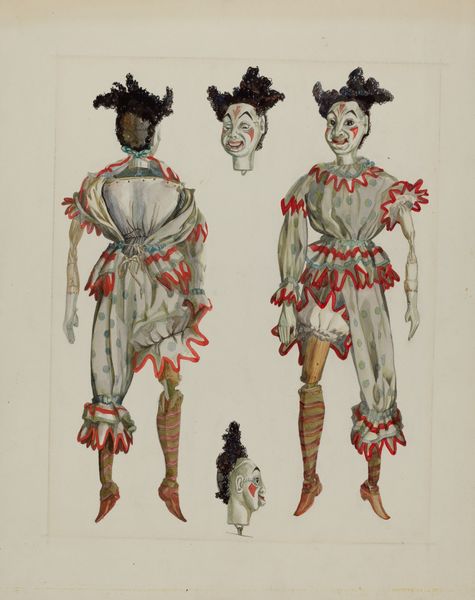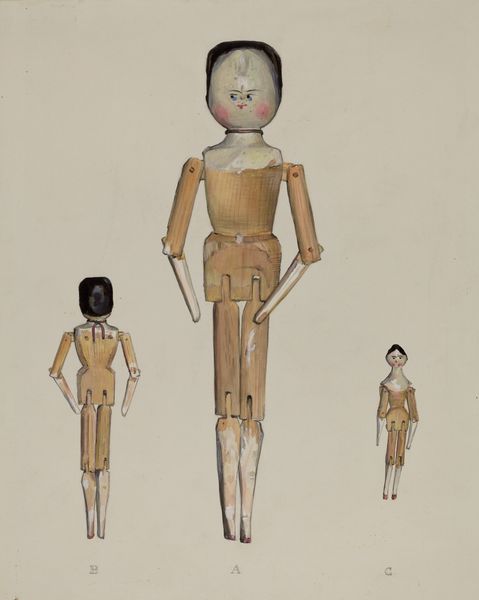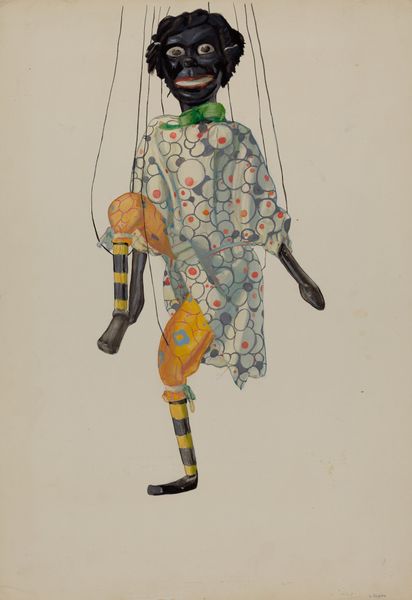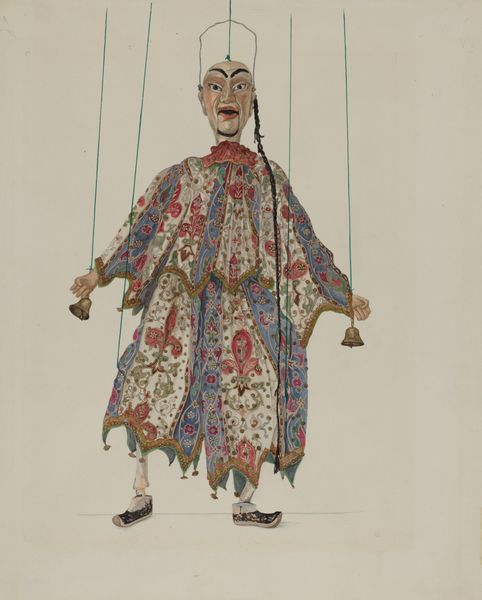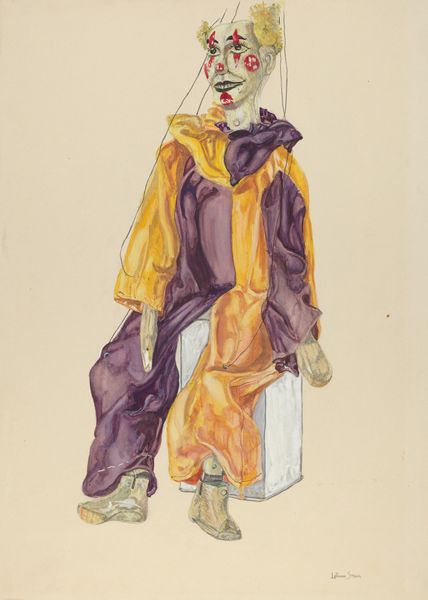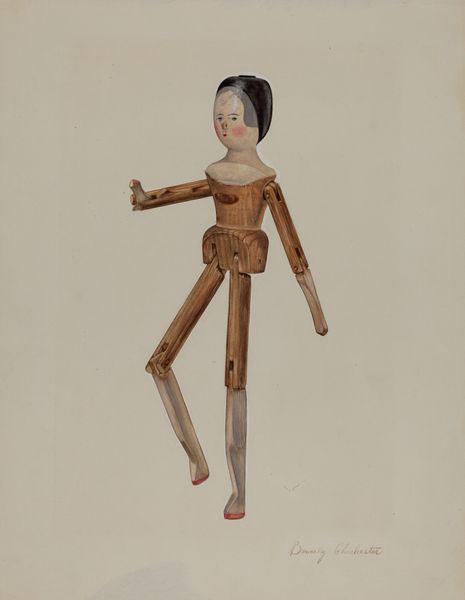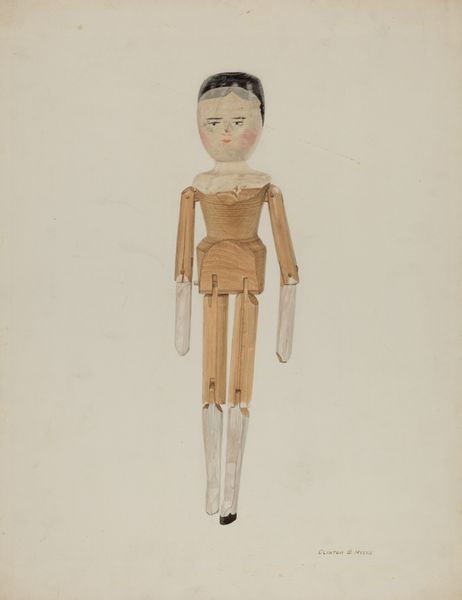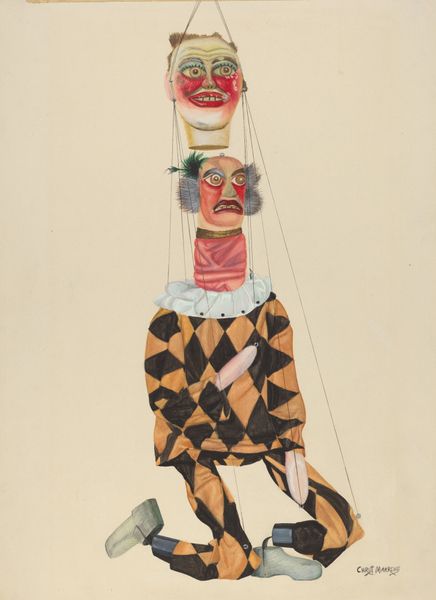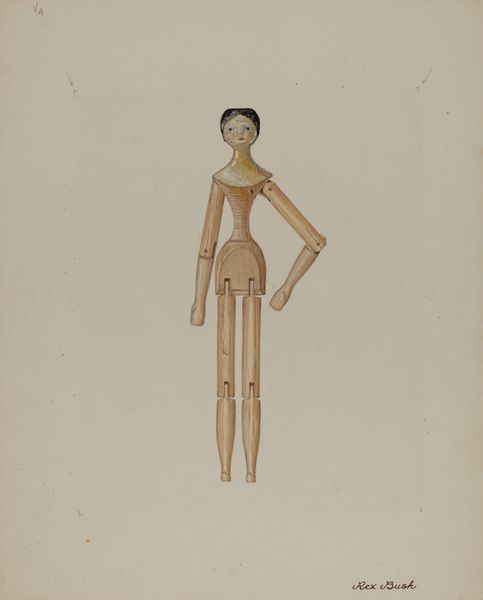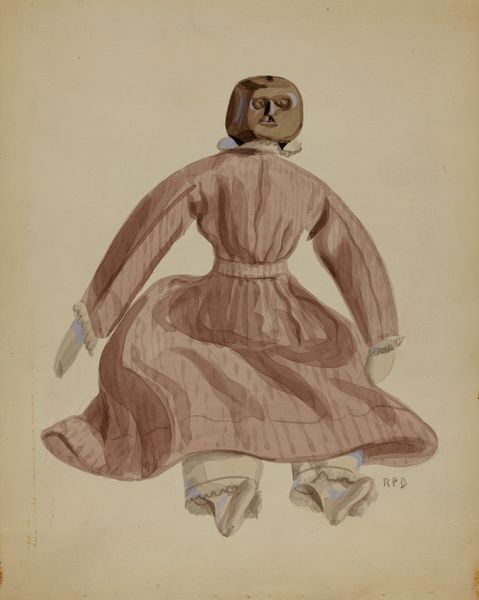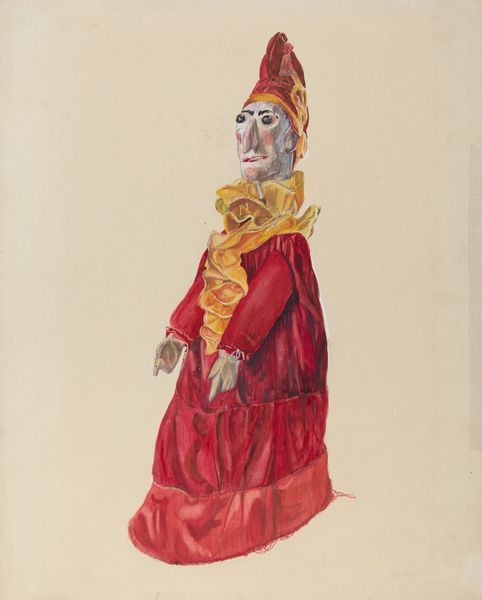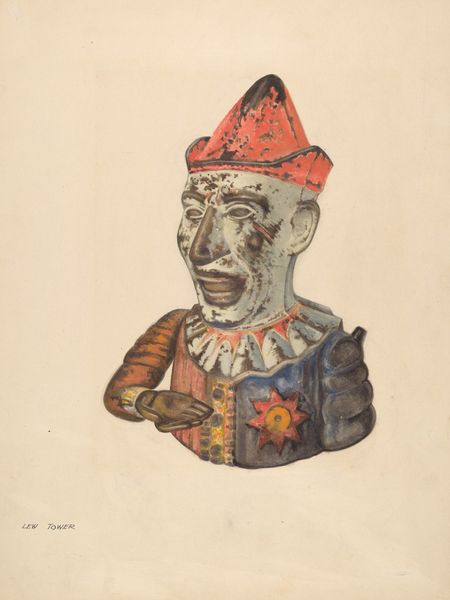
drawing, gouache
#
portrait
#
gouache
#
drawing
#
gouache
#
figuration
Dimensions: overall: 35.6 x 28 cm (14 x 11 in.) Original IAD Object: 50" high
Copyright: National Gallery of Art: CC0 1.0
Curator: This work, believed to date from around 1937, is a gouache drawing titled "Drunken Clown" Puppet, by Verna Tallman. Editor: Oh, it's unsettling, isn’t it? The separated body parts and vacant expressions create this almost clinical feel, despite the colorful costume. Curator: Yes, the clown, traditionally a figure of mirth, becomes something rather mournful here. Consider how the puppetry itself echoes themes of control, and inebriation further loosening those restraints. The figure appears caught between performance and collapse. Editor: Right. And look at the process: gouache allowed for flat blocks of color, but also layering for details like the costume’s fabric. This was clearly preparatory. Perhaps she wanted to really visualize the individual pieces of the mechanism. Is there record of if she made the physical puppets too? Curator: Sadly, I don’t have confirmation. The artist employs the recurring imagery of theatricality and masking; what is revealed or hidden behind the facade. Notice that there’s more focus and visual weight placed on the deconstructed or unfinished pieces. Editor: Good point, this isn't just an exercise in illustration. You get a raw, fragmented sense. We see the workings – joints, and levers alongside the smooth head. The puppeteer’s work. It makes me consider what the costume meant at the time. It resembles that of the court jester with those exaggerated silhouettes, that's juxtaposed against the plain mask-like expression, absent of emotion. What stories was the puppet designed to tell? Curator: Tallman certainly appears to explore the psychological complexities hidden beneath outward appearances, engaging cultural ideas regarding masking, class, and freedom during the mid 20th century. Editor: Absolutely. I look at the marks, gouache layering, the texture— evidence of human labor involved in picturing it. A potent reminder of production during that interwar era. I find myself asking not just about the image, but also its own making and Verna Tallman's intention. Curator: Exactly, that focus offers avenues for more thought on art’s historical roles, or as cultural metaphor. Editor: So, in both the subject and material there are mechanisms exposed and considered here: that’s the dual punch in the puppet show that this artist is inviting.
Comments
No comments
Be the first to comment and join the conversation on the ultimate creative platform.
